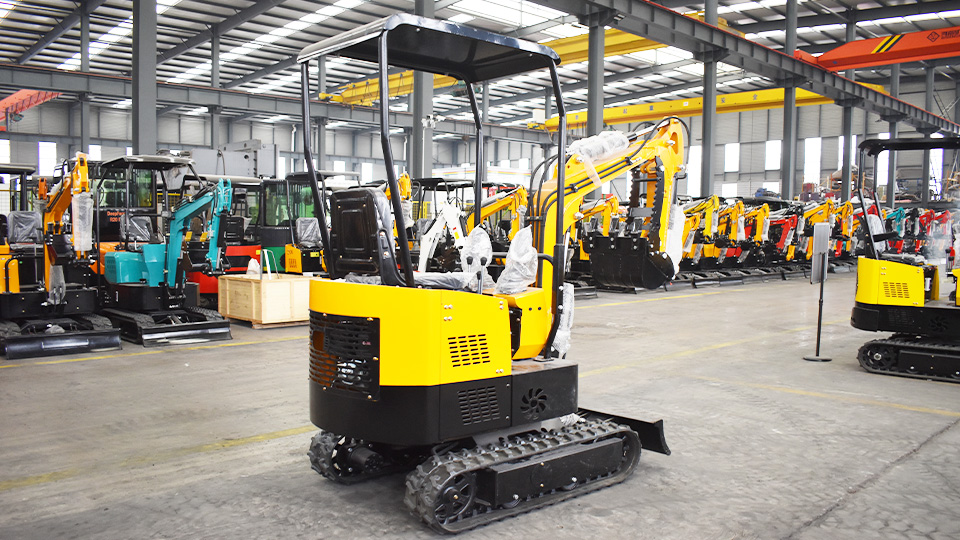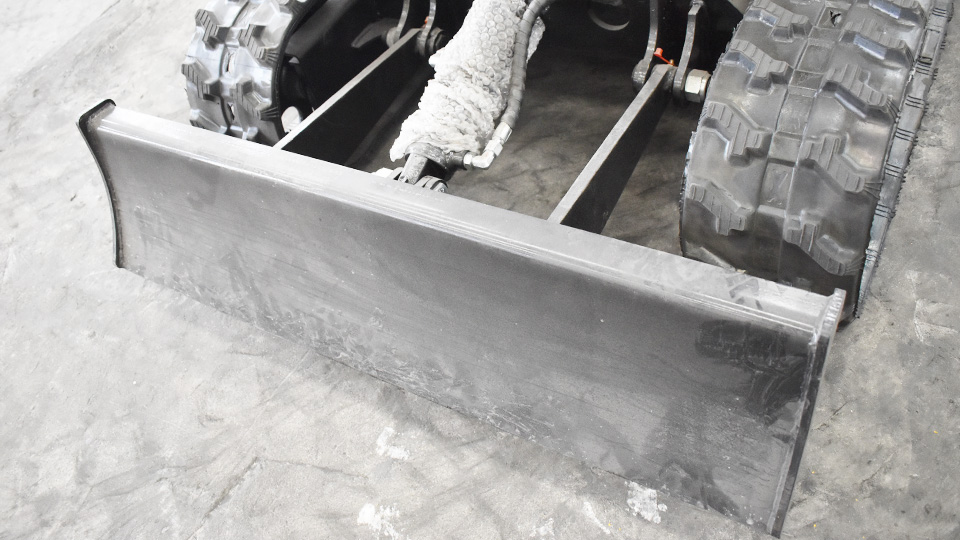Digging into Dollars: Assessing the Profitability of Excavator Ownership
Excavators are the workhorses of the construction, infrastructure, and demolition industries, their powerful hydraulic arms and versatile attachments capable of tackling a vast array of tasks. For individuals and businesses considering investing in this heavy machinery, a fundamental question arises: how profitable is it to own an excavator? The answer, like the terrain an excavator often traverses, is multifaceted and depends on a complex interplay of factors ranging from acquisition costs and utilization rates to maintenance expenses and revenue generation strategies. This in-depth technical article will dissect the profitability of excavator ownership, exploring the key revenue streams, the significant cost centers, and the critical strategies for maximizing returns on this substantial investment.
Revenue Streams: Where the Money Comes From
The profitability of an excavator hinges on its ability to generate revenue. Several primary avenues contribute to the financial returns of ownership:
1. Hourly or Daily Rental:
This is perhaps the most common revenue stream for excavator owners, particularly smaller businesses or individuals. Renting the machine out to contractors, landscapers, homeowners undertaking significant projects, or even larger rental companies can provide a steady income stream. Rental rates vary significantly based on the size and class of the excavator, its age and condition, the geographic location, and the prevailing market demand. Higher utilization rates directly translate to increased rental income.
2. Contract Work:
Owners can directly bid on and undertake excavation projects themselves. This can range from small residential landscaping jobs to larger commercial site preparation, utility trenching, or demolition work. This model offers the potential for higher profit margins compared to rentals, as the owner directly benefits from the labor and expertise provided alongside the machine. However, it also entails greater responsibility for project management, insurance, and potential liabilities.
3. Subcontracting:
Excavator owners can act as subcontractors for larger construction firms, providing specialized excavation services on larger projects. This can offer a more consistent workload compared to solely relying on individual rentals or smaller contracts. Subcontracting rates are typically negotiated based on the scope of work, timeframes, and the excavator's capabilities.
4. Specialized Services:
Equipping the excavator with specialized attachments can open up niche revenue streams. For example, a mini excavator with a hydraulic breaker can be rented out for concrete demolition, or an excavator with an auger attachment can be used for fence post installation or drilling. These specialized services often command higher rental or contract rates due to the unique capabilities they offer.

5. Salvage and Resale:
While not a primary revenue stream, the eventual resale value of the excavator contributes to the overall profitability of ownership. Well-maintained machines from reputable manufacturers tend to retain their value better. Owners can also potentially generate revenue from selling salvaged parts if the machine reaches the end of its operational life.
The Cost Centers: Where the Money Goes
Offsetting the revenue generated are several significant cost centers associated with owning and operating an excavator:
1. Acquisition Costs:
The initial purchase price of an excavator is a substantial investment, ranging from tens of thousands to hundreds of thousands of dollars depending on the size, features, and manufacturer. Financing costs (interest on loans) or the opportunity cost of capital also need to be considered.
2. Depreciation:
Like all capital assets, excavators depreciate in value over time due to wear and tear, obsolescence, and market factors. The rate of depreciation depends on factors like usage intensity, maintenance quality, and market conditions. Accurately accounting for depreciation is crucial for determining true profitability.
3. Fuel Costs:
Excavators are fuel-intensive machines, and diesel costs can fluctuate significantly. Fuel consumption depends on the size of the excavator, the intensity of the work being performed, and the efficiency of the engine.
4. Maintenance and Repairs:
Regular maintenance (oil changes, filter replacements, lubrication) is essential to keep the excavator operating efficiently and prevent costly breakdowns. However, unexpected repairs can occur, and the cost of parts and labor for heavy machinery can be substantial.
5. Insurance:
Comprehensive insurance coverage is vital to protect against damage, theft, and liability. Insurance premiums vary based on the value of the machine, the scope of coverage, and the owner's operating history.
6. Transportation Costs:
Moving an excavator between job sites can incur significant transportation costs, especially for larger machines requiring specialized trailers and permits.
7. Operator Costs (if applicable):
If the owner hires an operator, their wages, benefits, and associated labor costs need to be factored into the expenses.
8. Permits and Licenses:
Depending on the location and type of work, various permits and licenses may be required for operating an excavator, adding to the overall cost.

9. Storage Costs:
Secure storage for the excavator when it's not in use may incur rental or property maintenance costs.
Maximizing Profitability: Key Strategies for Success
Achieving profitability with excavator ownership requires a strategic approach focused on maximizing revenue and minimizing costs:
1. Strategic Acquisition:
Right-Sizing: Choose an excavator size and type that aligns with the primary target market and the most frequent types of jobs. Owning an overly large or specialized machine that sits idle will erode profitability.
Used vs. New: Consider the trade-offs between the lower initial cost of a used machine and the potential for higher maintenance costs and lower reliability compared to a new excavator with a warranty. Thorough inspection and due diligence are crucial when purchasing used equipment.
2. Effective Utilization:
Maximize Rental Hours: Actively market the excavator to potential renters and maintain it in good working order to minimize downtime. Consider using online rental platforms to reach a wider audience.
Secure Consistent Contract Work: Develop relationships with contractors and bid competitively on projects that align with the excavator's capabilities.
Explore Niche Markets: Invest in specialized attachments to tap into higher-margin niche services.
3. Efficient Operations:
Implement Regular Maintenance Schedules: Proactive maintenance can prevent costly breakdowns and extend the lifespan of the excavator.
Train Operators for Efficient Use: Skilled operators can maximize productivity and minimize fuel consumption and wear and tear.
Optimize Transportation Logistics: Plan routes efficiently and explore options for minimizing transportation costs.
4. Cost Management:
Negotiate Favorable Insurance Rates: Shop around for the best coverage at competitive premiums.
Monitor Fuel Consumption: Implement strategies to minimize idling and optimize operating techniques for fuel efficiency.
Establish Relationships with Reliable Parts Suppliers: Secure competitive pricing on frequently needed maintenance items.
Accurately Track Income and Expenses: Implement a robust accounting system to monitor profitability and identify areas for cost reduction.
5. Strategic Pricing:
Research Market Rental Rates: Understand the prevailing rates in your geographic area and price competitively while ensuring profitability.
Value-Based Pricing for Contract Work: Price projects based on the scope of work, time involved, and the value provided to the client.
6. Timely Resale:
Maintain the Excavator's Condition: Regular maintenance and care will enhance its resale value.
Monitor Market Trends: Sell the excavator at an opportune time to maximize returns on the initial investment.
Factors Influencing Profitability:
Several external and internal factors can significantly impact the profitability of excavator ownership:
Economic Conditions: A strong economy typically leads to increased construction activity and higher demand for excavators. Conversely, economic downturns can reduce demand and rental rates.
Local Market Demand: The specific needs of the local construction and landscaping industries will influence the demand for different sizes and types of excavators.
Competition: A highly competitive rental or contracting market can put downward pressure on rates and margins.
Regulations: Environmental regulations regarding emissions and operating hours can impact operating costs.
Weather Conditions: Inclement weather can lead to project delays and reduced utilization.
Owner's Business Acumen: Effective management, marketing, and financial planning are crucial for maximizing profitability.
Conclusion: A Calculated Investment
Owning an excavator can be a profitable venture, but it requires careful planning, diligent management, and a thorough understanding of both the revenue-generating potential and the significant cost centers involved. There is no guaranteed profit margin, and success hinges on factors like strategic acquisition, effective utilization, efficient operations, prudent cost management, and a keen awareness of market dynamics.
Before taking the plunge, prospective owners should conduct thorough market research, develop a comprehensive business plan, and accurately estimate potential revenue and expenses. By implementing sound business practices and proactively managing their investment, excavator owners can indeed dig their way to a profitable and sustainable business. The key lies in treating the excavator not just as a piece of machinery, but as a valuable asset that requires careful cultivation to yield optimal financial returns.
Post time:Sep-25-2020
